Lance Pearce – 24 October, 2014
TL;DR or “too long; didn't read” is an expression often seen in online discussion forums, a rebuff to other users for posting overly long comments. More broadly, TL;DR reflects the difficulty that we all face: we have demands on our time and way too much reading to do.
Auckland
Tyler Coburn, Mariah Garnett, Devin Kenny, Jarett Kobek, Becca Lieb, Newspaper Reading Club, Harsh Patel
TL;DR
Organised by Michael Ned Holte
9 October - 8 November 2014
TL;DR is an exhibition of eight artists whose work is driven by written content, with a particular focus on Internet-enabled reading habits and practices. The exhibition extends across numerous sites: works in Artspace, on the gallery’s website/email, and at ‘reading sites’ throughout Auckland. TL;DR or “too long; didn’t read” is an expression often seen in online discussion forums, a rebuff to other users for posting overly long comments. More broadly, TL;DR reflects the difficulty that we all face: we have demands on our time and way too much reading to do.
While ostensibly a PowerPoint presentation, Devin Kenny‘s lecture time flows through my hands like silica sand (2014) was more akin to a musical suite than a typical lecture (sans PowerPoint). At the podium, Kenny rapped to hip hop beats, tracing the history of the ‘word as image’ (from classical Latin, graffiti art, to Internet memes), while capturing present day anxieties regarding the overabundance of information sources. He touched on the dark side of the ‘filter bubble’, the online feature that provides the user with a personalised web search, but, as a result, separates the user from diverse viewpoints, effectively reinforcing their ideological position.
“I think now the ranks are defined not just by who can read, but what one can read, that is one’s ability or lack of ability to gain access, to break the filter bubble that the personalized internet has allowed us to reside in, and with the many levels of references, constantly being produced in the memeplex, the literacy required to fully utilize the information superhighway (where hitchhiking is not illegal) can be staggering.”
- from ‘The Insider (freestyle)’, Devin Kenny
Between raps, Kenny projected a series of disparate Internet-sourced images, video clips, and texts on the wall. Featuring text outlining ‘The Autobiography of Bread’, a production still from the Alien film franchise, and a YouTube clip of Internet poet Steve Roggenbuck, the selection highlighted the growing accessibility and distribution of content, be it personal, independent or corporate owned, within the circuitry of digital networks. Increasingly we are ‘prosumers’; producers and consumers of content, shaping ourselves through Facebook photos, tweets and YouTube links-or engaged in ‘self design’ according to the Boris Groys coinage-and media corporations, manifest in online social platforms, determine our efforts of self presentation.
Mariah Garnett addresses the Internet as a vast online network that has increased the overall volume of our communication in the past few decades. Her video Untitled (Eclipse) (2012) scrolls a found text over footage of a partial solar eclipse. The text is copied from an online personal ad in which a professional gambler hopes to organise an itinerant, polyamorous poker crew.
“How would you like to play poker for a living, travel around the country with your best friends, make lots of money, and have an awesome, tribal, bi sexual group love life?”
The gambler’s proposal is seemingly genuine and indicative of the demise of ‘work-life balance’ as a concept. Today, with communication technology blurring the boundaries between home and work, the gambler heralds a future in which home and work will be indissolubly wed, with a poker dealer acting as the officiant.
The barbed quotes in Harsh Patel‘s letterpress prints-exhibited here on a clear perspex table-are rematerialised from British music journalism. Cobra (3DX 43) (2014) incorporates a quote by Noel Gallagher, ex-Oasis guitarist, criticising the indie bands that were once hostile toward bands seeking corporate-funded chart success. The print is dominated by a block colour illustration showing a skull on its side placed on a Thonet “No. 14” chair, one of the most successful products in the history of mass produced objects. There are three red, painterly smears within the image suggesting the ‘authentic’ artistic expression of painting or the feuds and antagonisms that result in spilled blood. Acting as a retort, Plaza (3DX 44) (2014) features a snarky review of an Oasis album by the single-named, ex-Felt singer Lawrence. Playing music since 1979, Lawrence is the epitome of an obscure cult artist, pioneering the 1980s UK indie pop sound without breaking through to mainstream success. Through reference to a specific cultural moment, Patel’s striking work evokes the historic antagonisms between the avant-garde and mass culture’s union of art and commerce.
Becca Lieb‘s triptych Rachel (2013) is a row of paintings placed among ceiling-to-floor columns of text applied to the gallery wall in vinyl lettering. The paintings reproduce unintentional crotch shots reflected in silver plated pitchers, sourced from online classified ads. The compositions are appropriately functional; the paint application is thin, the colours earthen-tone (yellows, browns). Searching through hundreds of eBay listings, Lieb has sourced photographs that not only reveal the seller’s environment but also a crotch shot of the seller. She performs an ‘erotics of surveillance’. Lieb’s process echoes a scene in Ridley Scott’s Blade Runner (1982) in which Deckard (Harrison Ford) uses a photo analysis machine to enlarge details in a photograph, in which he finds the reflected image of a woman sleeping. By using the eBay zoom function, Lieb reinterprets the surveillance trope in this early cinematic depiction of digital technology. In the installation of the work, the outer paintings are pitched at an angle from the wall facing toward one another, drawing visitors near, to face and around the paintings. This tilting intensifies the material presence of the paintings, as if a deliberate foil to their illusionistic surface.
According to the gallery notes, the columns of text were ‘culled from a seemingly endless real estate listing for a Brooklyn apartment.’ The online listing is by a realtor who is trying to rent an apartment. The listing includes an excessive amount of information in an attempt to improve the odds that the apartment will turn up in a search and will be rented. The ad appears in white text, invisible to the human eye, but is read by the eye of the Craigslist search engine. Lieb’s work summons the complex, everyday experience of desire-passions, obsessions and half-truths-packed with concentrated emotions, including inevitable disappointments.
TL;DR proves a relevant entry point for this examination of the human relationship to digital technology. Getting to grips with the current overabundance of information sources has never been a more urgent and necessary task, not least because of online privacy, security and surveillance issues. The works under review are just a few from a rich, sprawling show that lives up to its name. A show that demands and rewards repeat visits.
Lance Pearce
Recent Comments
Luke Munn
Great review with some nice access points as I couldn't make the show in person. There's a nice conflation in ...
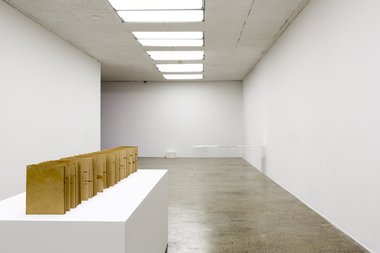
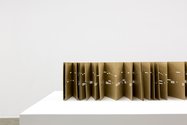
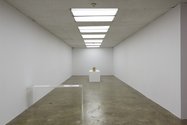
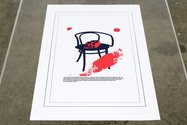
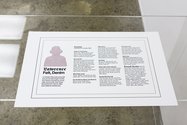
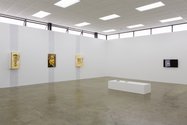
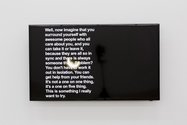
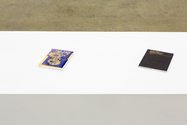
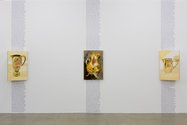
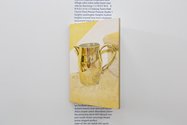
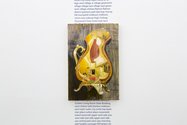

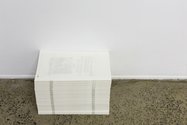
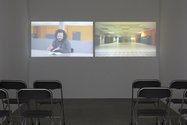
 Advertising in this column
Advertising in this column Two Rooms presents a program of residencies and projects
Two Rooms presents a program of residencies and projects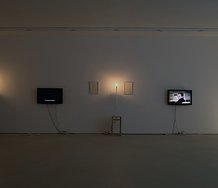
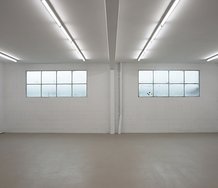
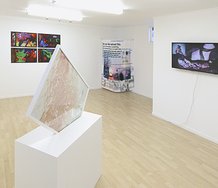
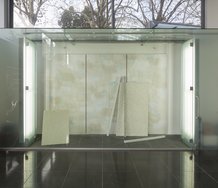
This Discussion has 1 comment.
Comment
Luke Munn, 10:33 a.m. 13 November, 2014 #
Great review with some nice access points as I couldn't make the show in person. There's a nice conflation in most of the works with the multiplicity / volume of media online and the stacked, overlaid and juxtaposed forms they are materialised as in the gallery space - digital fluidity driving physically interesting objects.
It seems like there's something here, not just about the human relationship to technology in general, but more specifically about the irrepressibility of intimacy - the crotch shots and bisexual poker troupe surfacing in these monetized, monitored platforms structured primarily for frictionless commodification (goods, services, etc).
Participate
Register to Participate.
Sign in
Sign in to an existing account.